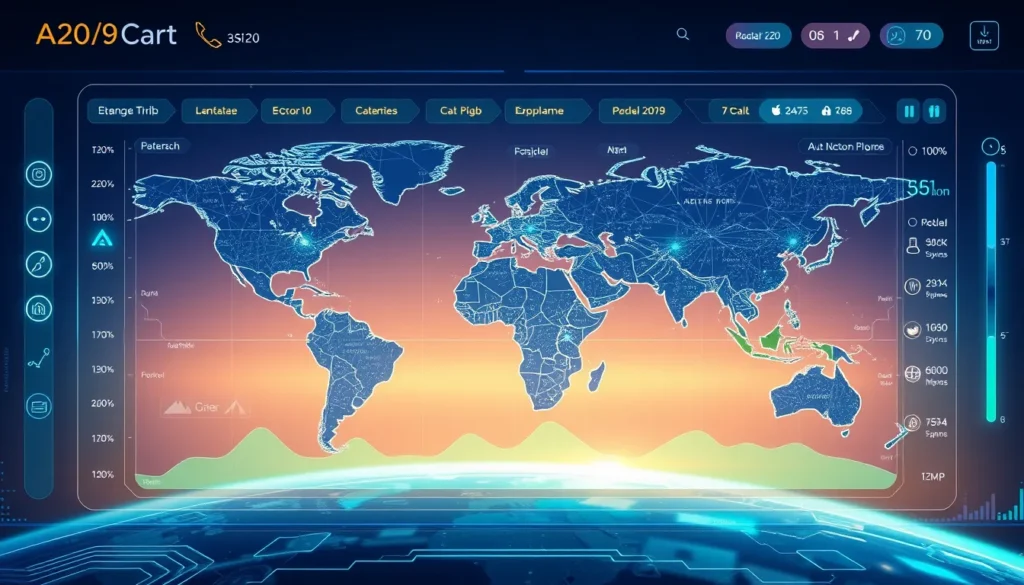Now Reading: Mistral AI: Next-Gen Magistral Reasoning Model Unveiled
-
01
Mistral AI: Next-Gen Magistral Reasoning Model Unveiled
Mistral AI: Next-Gen Magistral Reasoning Model Unveiled

Mistral AI: Next-Gen Magistral Reasoning Model Unveiled
Mistral, an emerging leader in artificial intelligence, has captivated the tech community with its groundbreaking release of the Magistral reasoning model. With this innovative model, Mistral demonstrates the power and potential of advanced AI reasoning, making significant strides in both technology and open-source distribution. The focus of the release is clear: the Mistral AI Magistral reasoning model is designed to meet the needs of various organizations, from large-scale enterprises to small businesses, by offering a unique dual release strategy.
Revolutionizing AI with Dual Release Strategy
One of the key elements that set this launch apart is the dual release strategy of AI reasoning models. Mistral has released two distinct versions of the Magistral model: a large version and a small version. This strategic move ensures that the model is accessible and scalable, addressing the varying demands across different sectors. Here are a few noteworthy benefits of this approach:
- Flexibility: Companies with extensive computational resources can leverage the large AI model for robust performance, while smaller organizations can opt for the efficient and cost-effective small AI model.
- Adaptability: The dual release facilitates the integration of AI technology in a wide array of settings, ensuring that advanced reasoning capabilities are available regardless of resource constraints.
- Innovation: By offering two versions, Mistral fosters an environment where continuous enhancements and improvements in AI reasoning technology are possible.
This dual release strategy of AI reasoning models reinforces Mistral’s commitment to making advanced AI technology accessible to a broader audience. It enables organizations to tailor their AI strategy based on their infrastructure and specific needs, promoting a culture of scalability and innovation.
Open-Source Benefits Under Apache 2.0 License
In addition to the dual release strategy, Mistral has chosen to distribute the Magistral reasoning model under the widely respected Apache 2.0 license. This decision is significant for several reasons:
- Transparency and Collaboration: The Apache 2.0 license invites AI researchers, developers, and businesses to examine, modify, and enhance the model. This open-source approach is designed to accelerate innovation and promote community-driven improvements.
- Trust and Clarity: The Apache 2.0 license offers legal protection and clarity for both creators and users. This framework reassures stakeholders that the technology is secure and built on established industry standards.
- Future-Proofing: Open-source AI reasoning technology, such as Magistral, ensures that the model evolves alongside emerging research and real-world applications. It paves the way for collective problem-solving and breakthrough developments in AI.
The decision to use an Apache 2.0 license underscores Mistral’s commitment to open innovation and collaborative progress. It signals to developers around the world that the model is poised for continuous refinement, with potential improvements emerging from a diverse community of experts.
Scalability and Efficiency: Large vs. Small AI Models
Mistral’s approach to releasing a large and a small version of the Magistral reasoning model meets the distinct requirements of different users. Developers and organizations can now choose a model based on their operational needs:
Large AI Model for Enterprises
The large version of the Magistral reasoning model is engineered with high performance in mind. This option is ideal for enterprises and organizations that have substantial computational resources and require robust processes for handling complex and data-intensive tasks. Features include:
- Enhanced processing power for dealing with advanced reasoning and analytics.
- Capability to manage multifaceted data sets across industries, such as finance and healthcare.
- Support for various applications including decision support systems, natural language processing, and predictive analytics.
Small AI Model for Accessibility and Efficiency
Understanding that not every organization has access to state-of-the-art hardware has led Mistral to develop a small, equally capable version of the model. This version is optimized for efficiency without compromising on the core benefits of advanced reasoning. It is specifically designed for:
- Small organizations and startups that require accessible AI for harnessing the power of advanced reasoning.
- Environments with limited computational infrastructure but a high demand for intelligent decision-making capabilities.
- Scenarios where cost-effective and scalable AI technology is essential for driving business growth.
Diverse Applications Across Industries
The advanced capabilities and dual release strategy of the Mistral AI Magistral reasoning model have widespread implications. The model is engineered to adapt to a variety of complex tasks, making it relevant for multiple sectors. For example:
- Finance: In the financial sector, the model can be utilized to analyze economic trends, forecast market dynamics, and provide deeper insights through its reasoning and deduction capabilities.
- Healthcare: The model is capable of supporting diagnostic processes by analyzing complex medical data and contributing to more accurate and holistic patient assessments.
- Academia and Research: Researchers can leverage the open-source nature of Magistral to experiment with novel approaches to problem-solving and machine reasoning.
Moreover, industries that rely on large AI models for data analysis stand to benefit significantly from this technology. The ability of Magistral to simulate human-like reasoning means that it can handle diverse scenarios, from automated customer service solutions to complex decision-making systems in innovative tech applications.
Conclusion: Shaping the Future of AI
The launch of the Mistral AI Magistral reasoning model marks a pivotal moment in the evolution of AI. With its dual release strategy, open-source foundation under the Apache 2.0 license, and a dedicated focus on scalability and accessibility, Mistral sets a new standard for AI reasoning technology. Whether it is the robust large version or the efficient small model, both options empower organizations of every size to integrate advanced reasoning into their operations.
In a rapidly evolving technological landscape, this innovative approach not only drives progress within the AI community but also paves the way for future advancements that can transform industries worldwide. As more businesses seek to implement sophisticated AI solutions, the Mistral AI Magistral reasoning model stands as a testament to what can be achieved with a clear vision, collaborative spirit, and commitment to accessibility and excellence.
Ultimately, the integration of this state-of-the-art model into various sectors will continue to fuel innovation, offering a robust tool for developers and organizations aiming to leverage artificial intelligence for smarter, more efficient outcomes in an increasingly digital world.

























